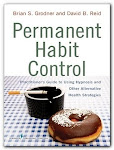Weight / [Height (in inches)]2 x 703
The Center for Disease Control and Prevention web page offers an easy to use BMI calculator for adult, adolescents and children and can be accessed at this link: http://www.cdc.gov/nccdphp/dnpa/healthyweight/assessing/bmi/index.htm. Scores below 18.5 are considered underweight; scores between 18.5 and 24.9 are within the normal weight range; scores between 25.0 to 29.9 are classified as overweight; and scores 30 and above are obese.
Using the BMI as a measurement of obesity, the figures below show the body mass trends among American adults from 1990 to 1998 to 2005 to 2007. These figures reflect people are considered obese and have a BMI of 30 or more.
To bring this image to life, a BMI of 30 would be a 5’ 4” person weighing approximately 170 pounds or a 5’10’ person weighing 207 pounds. A BMI of 25 is considered “overweight” and is reflected in an individual who is 5’ 4” weighing approximately 145 pounds or a 5’10’ tall person weighing 174 pounds.
If you closely examine each state in the figure, you will clearly see the changes from 1990 to 1998 where what once was coded light blue and representative of ideal or healthy body mass index, is now darkened to reflect increased BMI. Further, in 2005, fewer states remain within an acceptable BMI range while a preponderance of states have BMIs greater than 30 (20-24% of the population), and some exceeding 25%. As you can see from the last figure, Americans continue with an ever expanding waistline.




So what to do:
Weight management requires a number of key ingredients, all of which must be included in a persons daily regimen if they are to lose weight. First and foremost, I encourage my clients to consider a "lifestyle change", not just a "diet". Dieting usually connotes some means to an end. Once you reach that end, the diet is off. And since most diets can be very restrictive, most don't persist and any weight initially lost, finds it way back to your body. So think "lifestyle change".
In an effort to facilitate lifestyle change, I encourage you to consider volumetrics, the ground-breaking research on dieting by Dr. Barbara Rolls.
Dr. Rolls is a veteran nutrition researcher who has focused her research interests on the study of hunger and obesity. It is a fairly well established fact that the reason most people abandon diets only to return to unhealthy dietary habits is the lingering sense of hunger. In her book The Volumetrics Eating Plan: Techniques and Recipes for Feeling Full on Fewer Calories (2005) Dr. Rolls explains the key to feeling full: energy density of foods. Energy density is simply the concentration of calories in a given weight or serving size of food. The energy density of a particular food can be calculated by dividing the number of calories by the number of grams (cal/g). For instance, if a 28 g serving of a reduced-fat cheese stick is worth 60 calories, its energy density would be 2.1 (60/28 = 2.1). By the same token, a one cup, or 245 g serving of low fat yogurt is worth 154 calories with a resultant energy density of 0.61. The lower the number, the better the food and the more of it you can consume without gaining weight. Obviously in the above two examples, a cup of low-fat yogurt is relatively better than a 28 g serving of a reduced-fat cheese stick.
Essentially, a food that is high in energy density has a large number of calories in a small amount of food whereas a food with low energy density has fewer calories for the same weight of food. Consequently, according to Dr. Rolls’ research if we choose foods that offer fewer calories for the same amount of food, we will be able to manage our weight more effectively without going hungry.
Check out her work at http://www.volumetricseatingplan.com/. You may find a solution to the persistent and frustrating yo-yo dieting that doesn't seem worth the effort.
Next up: Making a more fuel efficient system with resistance training.
Till then be well.
David
